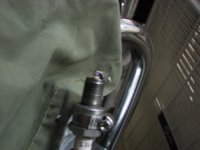Take Warning15
XS650 Addict
I have been testing the coils with the help of a lot of threads on here but am still a bit confused. It is possible that the colors of the wires on my bike are throwing me off. I suspect a bad coil but haven't confirmed it.
Can someone possibly walk me through troubleshooting the coil? I have brown and orange wires to the coil.
They are stock coils connected to points. I've replaced the condensors and points. Every test I do shows either infinite or 0 ohms, none show any other number of resistance.
Can someone possibly walk me through troubleshooting the coil? I have brown and orange wires to the coil.
They are stock coils connected to points. I've replaced the condensors and points. Every test I do shows either infinite or 0 ohms, none show any other number of resistance.

